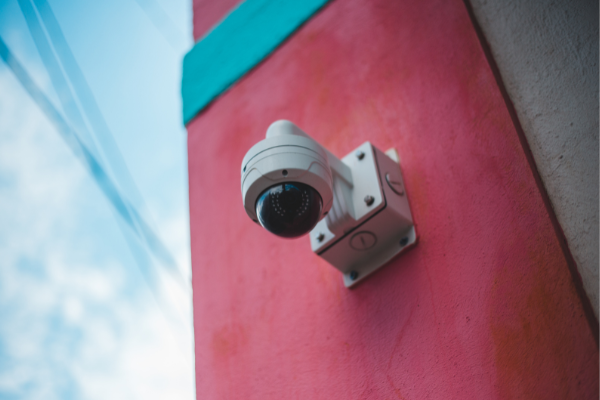CCTV cameras are becoming more popular with businesses of all kinds and sizes. From restaurants to nightclubs, offices to stores, and homes to hotels – quite a variety of firms employ CCTV cameras for several purposes. If you’ve decided to implement CCTV in your business, you’ll need to know how to choose the right type of camera for your needs.
You can contact a reputable camera manufacturer in the UK for professional assistance. Various types may be suitable for your business, but what exactly do they do? To help you understand, we’ve outlined some of the most common types of CCTV cameras below.
1) Bullet Camera
Bullet cameras resemble huge bullet cartridges with their long, tapered cylinder-like form. They’re mainly utilised outside, especially when you need to watch something for a long time. They can, however, be used indoors where there is a need for prolonged viewings, such as in backyards and parking lots. They are usually waterproof and are put inside protective enclosures. Most bullet cameras have a set length that allows for a viewing angle of up to 80 degrees. A fixed or varifocal lens is commonly included with a bullet camera.
2) Thermal Image Cameras/Infrared Cameras
Infrared Cameras are one of the top 24-hour surveillance cameras on the market, offering quality images to airports, seaports, boards, and various other vital facilities at any time. Small LEDs surround the lens of infrared cameras to aid in detecting moving figures in complete darkness. Thermal image cameras can see across great distances of up to 300 metres.
3) PTZ cameras
PTZ stands for pan, tilt, and zoom. These cameras are well-known for their versatility, as they are a lightweight alternative that can cover a large area. They allow operators to manually control or program their cameras to get the most precise image possible. They are frequently used in situations requiring wide-area monitoring, such as cities, transportation hubs, sports stadiums, retail centres, and warehouses.
4) Dome Camera
Dome Cameras are commonly utilised for inside security systems and are named after their shape. The dome shape of these cameras makes them discreet because it’s difficult to discern which way they face while being visible to the naked eye. They’re a common sight in shopping malls. They are essentially vandal-proof because they are installed on the room’s ceiling. Infrared illuminators are built into dome cameras, allowing them to capture video in low-light situations.
5) High Definition Cameras
High-definition cameras have a high resolution and are primarily utilised in high-risk establishments like banks and casinos to maintain high security and optimum safety. It is necessary to capture a good image of everybody entering and exiting. These cameras are excellent for detecting wrongdoing and allow the user to zoom in for greater clarity if the evidence is needed in court.
6) C-Mount Camera
C-Mount Detachable lenses can be used on CCTV cameras for various applications. A CCTV camera can typically record up to 35 feet; however, a C-Mount Camera with a specific lens can help if you need surveillance beyond this distance. A varifocal lens is frequently utilised to fine-tune focus length and angle of vision. Without forfeiting focus, they can be zoomed in and out.
7) Network Cameras
These cameras transmit images via the internet, allowing for easy access to CCTV footage. Network cameras are perfect for domestic and business applications because you can view what’s happening when you’re away from the property.
Also, check out this blog on video surveillance system maintenance
8) Day/Night CCTV Camera
The day/night CCTV cameras can work in any lighting condition, from bright to dim. This security camera system doesn’t need infrared illuminators because it can capture quality video in both light and dark. Day/night CCTV cameras are ideal for outdoor surveillance, whereas infrared CCTV cameras do not perform well. These have an extended dynamic range, allowing them to work in various lighting circumstances, including glare, bright sunlight, reflections, and intense backlight, at any time.
9) Varifocal Cameras
Varifocal Cameras can zoom in and out without losing their focus. Varifocal cameras allow you to adjust the focal length and the angle and increase or decrease the zoom – ideal for capturing footage in a square room where you would typically experience a ‘dead zone’ with any alternative, fixed lens camera.
Conclusion
Whether you’re searching for a single camera or a network of cameras as part of an integrated security system, CCTV cameras can perform various tasks for the businesses that use them. These are primarily used for detection, deterrence, reassurance, evidence, access control, and facility management.












Add Comment